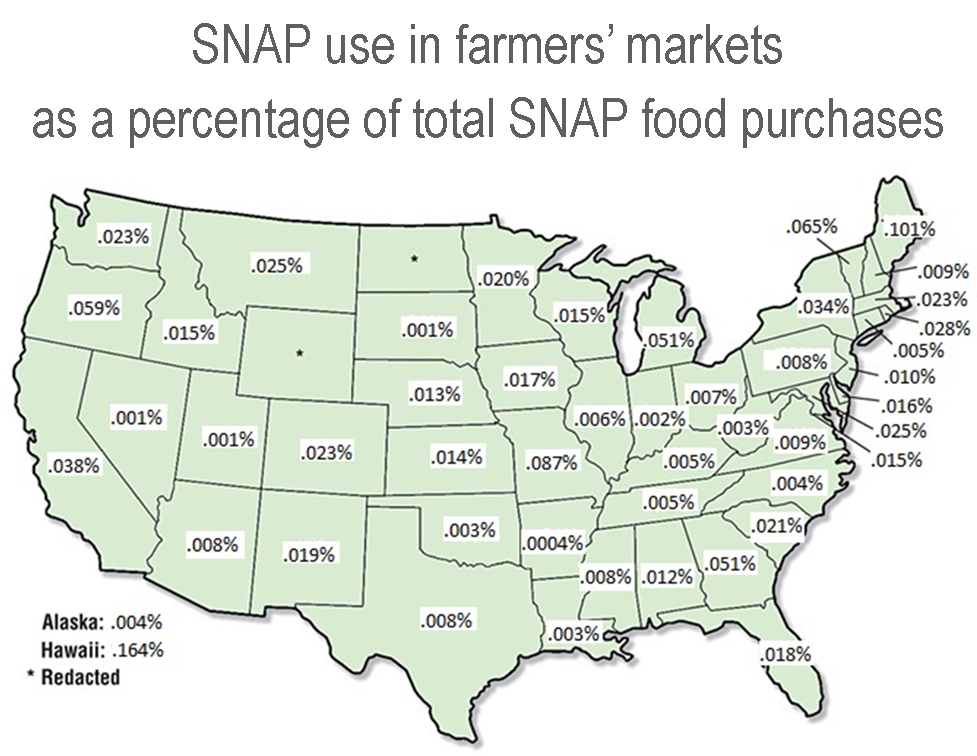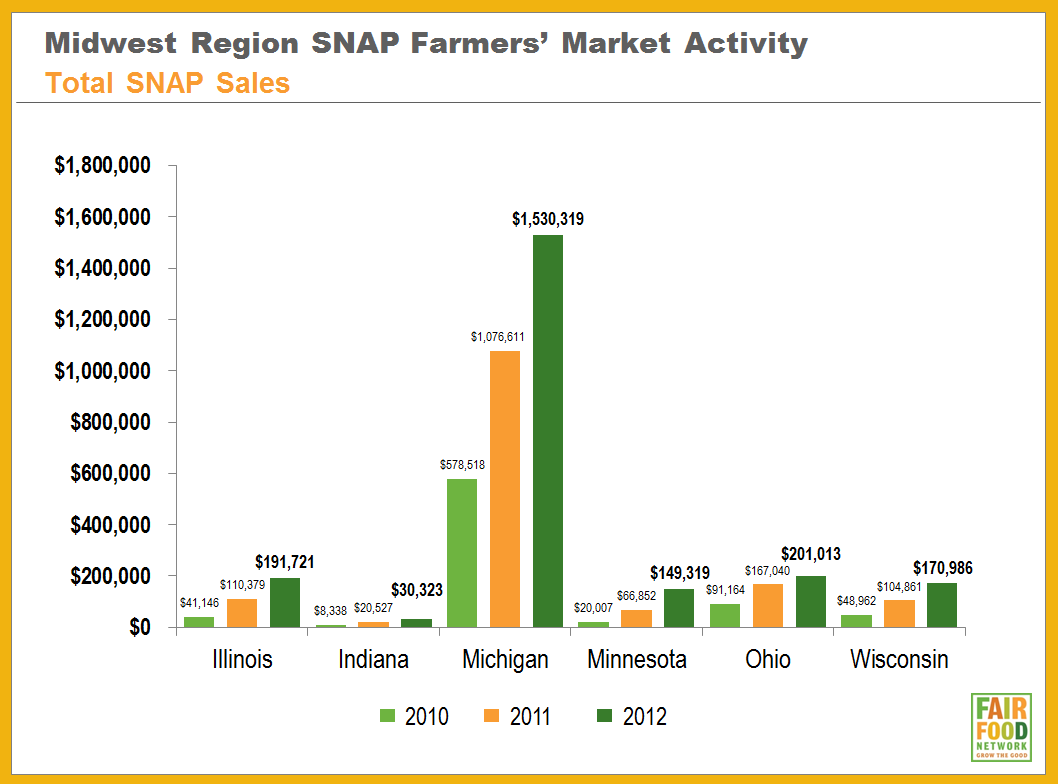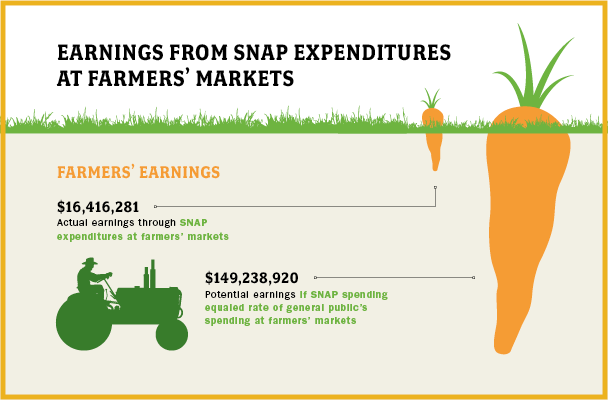Double Up Food Bucks for the Win-Win: Healthy Food Incentives Boost Healthy Food Access and Local Economies
Author: Oran B. Hesterman
Source: Altarum Health Policy Forum
Dr. Hesterman was one of the speakers at Altarum’s recent roundtable on encouraging healthy food choices in the Supplemental Nutrition Assistance Program.
In FY2012, the Supplemental Nutrition Assistance Program (SNAP, formerly known as food stamps) provided $74.6 billion dollars in benefits to 47.8 million recipients across the United States. Although most SNAP benefits are spent at conventional supermarkets, grocery stores, and big box stores, in many areas, only a small percentage of the sites where these benefits can be redeemed are considered grocery stores or supermarkets – the options in many neighborhoods with high SNAP participation are retailers not known for stocking fresh, affordable produce: gas stations, liquor stores, party stores, dollar stores, bakeries, pharmacies, and convenience stores.
Lack of access to healthy food and an overabundance of inexpensive highly processed foods, which tend to be calorie-dense and nutrition-poor, have contributed to high rates of obesity and diet-related illnesses, particularly in low-income communities. A serious health concern for both children and adults, obesity is directly related to the types and quantity of food that is available. According to USDA Economic Research Service, replacing one energy-dense snack (i.e., junk food) each day with a fruit or vegetable could reduce caloric intake and decrease the prevalence of overweight and obesity.
Common sense tells us that farmers’ markets, where fresh produce can be found in abundance, would be good places to start connecting low-income populations with increased amounts of fresh fruits and vegetables. Fair Food Network’s Double Up Food Bucks (DUFB) project is doing just that by offering a monetary incentive to SNAP recipients to spend their food assistance benefits on fresh, locally grown fruits and vegetables at their farmers’ markets. When a recipient spends SNAP funds at a participating market, DUFB matches the purchase dollar for dollar up to $20 per market visit. In essence, a low-income shopper who chooses to spend $20 of benefits at a farmers’ market can purchase a total of $40 of fresh produce, some (or all) of it grown by Michigan farmers. So does it work? YES!
DUFB was piloted in five Detroit farmers’ markets in the fall of 2009. Over the past four years, it has expanded to 75 markets and plans to grow to nearly 100 participating sites in 2013. It’s important to note that not only are the combined SNAP and DUFB dollars helping low-income consumers incorporate more fresh produce into their diet – they are also going directly into the pocket of Michigan farmers, boosting the local economy and creating jobs in our rural communities. Although SNAP dollars spent at farmers’ markets may purchase a variety of foods other than produce – such as meat, dairy, and bread – DUFB dollars are spent entirely on fruits and vegetables.
The graphic below shows the growth of the DUFB program over the past three market seasons.

Taking a larger view, the map below shows that the percentage of SNAP funds spent at farmers’ markets varies widely by state – significantly, Michigan ranks in the top four.

If we take a look at Michigan compared to its immediate neighbors in the upper Midwest Region, we find the following results:

Michigan farmers’ markets redeem significantly more SNAP benefits than those of neighboring states by a factor of more than 10. At Fair Food Network, we like to think that DUFB plays a significant role in the state’s success. The evidence clearly indicates that offering even a small monetary incentive not only encourages low-income consumers to purchase more fresh fruits and vegetables – it also brings significantly more SNAP dollars into the local food economy.
And this is where the potential of a healthy food incentive project such as DUFB gets really exciting. According to USDA, the general public spends 0.2 percent of its food dollars at farmers’ markets; however, in 2012, SNAP recipients nationwide spent a mere 0.022 percent of available SNAP funds at farmers’ markets – a large increase from 0.008 percent in 2009, but still far short of the general public’s 0.2 percent.
How would these figures look if SNAP customers spent their benefits at farmers’ markets at the same rate as the general public spends its food dollars there? In 2012, $16.4 million of the $74.6 billion in total SNAP funds distributed went to farmers’ market vendors. If the SNAP shoppers had spent 0.2 percent of the total SNAP funds, that would have increased the farmers’ income to $149.2 million! Just imagine the potential for simultaneously increasing the consumption of fresh produce in low-income populations and supporting the local farm economy if we could aim to get SNAP beneficiaries to spend their benefits at farmers’ markets at the same rate that the general public spends their food dollars there….

DUFB is demonstrating that with an incentive approach, we can bring significantly more SNAP shoppers to farmers’ markets to purchase fresh fruits and vegetables and put those dollars directly to work in the local agricultural economy. It is a win-win solution that deserves consideration as we debate and create the future of our food, agriculture, and nutrition policy in the 2013 Farm Bill.
Originally published at Altarum Institute Health Policy Forum on May 23, 2013.







